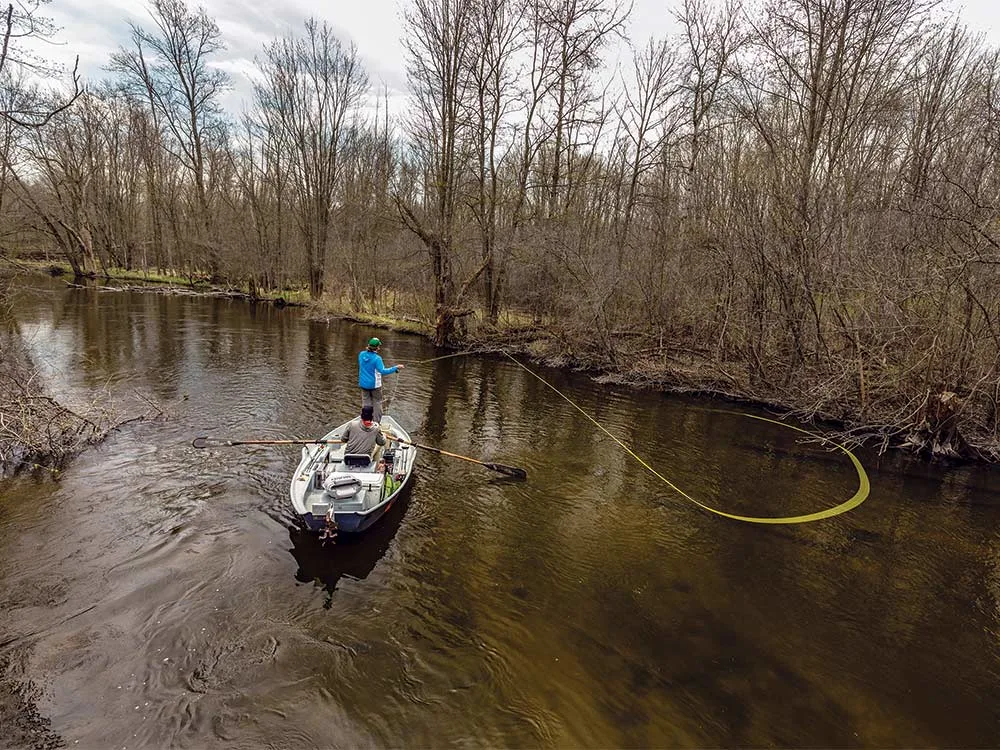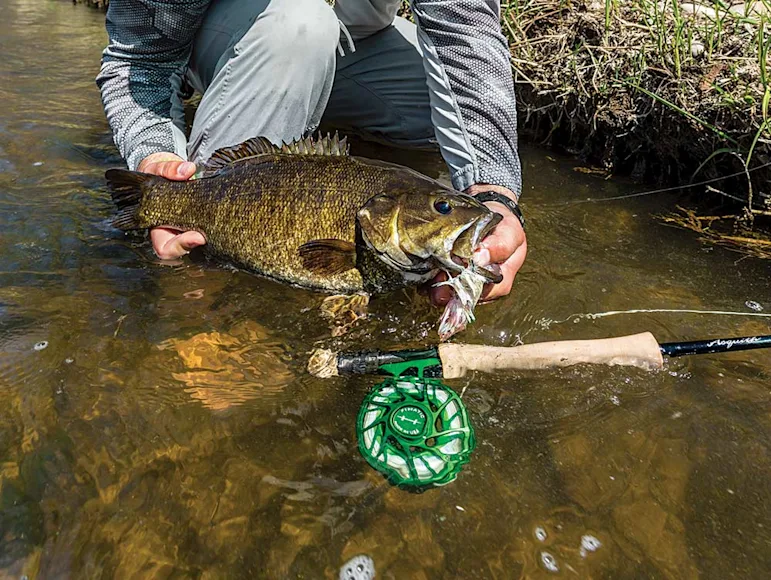_We may earn revenue from the products available on this page and participate in affiliate programs. Learn more ›
_
I live in one of the most trout-rich states. Idaho is chock-full of blue-ribbon waters, and fly anglers descend upon them every spring. I like to target trout as much as the next guy, but I can only dodge drift boats and outrun wading anglers for so long. That’s why I love smallmouths.
Because so many cold-water trout-fishing opportunities exist in the West, smallmouths are one of the most undervalued fly-rod gamefish here. This is ironic. If you look at the drainages of the largest Rocky Mountain trout rivers, the lower half is almost always prime bronzeback habitat, replete with a pebble rock and silt streambed, moderate water temperatures, and a big food supply.
For the past few years, I’ve had some of the finest smallmouth sight-fishing trips on water that’s barely 30 minutes from my front door, and I’ve learned some valuable lessons. With so many anglers tossing spinnerbaits, crankbaits, jerkbaits, and live bait, I’ve had to figure out ways to make flies stand out. To help you catch more smallies on the fly wherever you live, here are three concepts to remember.
.embed-container { position: relative; padding-bottom: 56.25%; height: 0; overflow: hidden; max-width: 100%; } .embed-container iframe, .embed-container object, .embed-container embed { position: absolute; top: 0; left: 0; width: 100%; height: 100%; }
Hook Shots: Shenandoah Smallmouth Assault
_by FieldandStream
_
1. Keep it Simple for River Smallmouths
I love fishing new flies, especially those loaded with modern materials designed to produce extremely lifelike action. I often reach for those patterns first, thinking they’ll be something the bass haven’t seen yet. Inevitably, after a hundred casts with maybe a few chases and a strike or two, I throw in the towel and reach for a Clouser Minnow.
In my experience, bass in moving water couldn’t care less about whether a fake minnow that moves or looks exactly like a real minnow. Silhouette and motion trump realism and natural color patterns. That’s why a Clouser is my No. 1 fly. It’s inexpensive, simple to tie, and easy to see when sight-fishing in crystal-clear water. Want to simplify things further? Don’t get carried away with too many color combinations. Yellow over chartreuse kills it for me in a wide range of conditions.

After the cast, strip slowly, and if a bass follows, pause and let the fly drop. Bryan Gregson
2. Slow Your Retrieve to Catch More Bass
Many of the people I take smallmouth fishing for the first time strip flies at Daytona 500 speeds and get frustrated when a bass follows but never commits. If you think about it, bass see all sorts of fast-moving spinners and lipped crankbaits. Hard baits can appear unnatural, and fish can eventually become conditioned to refuse them. When you make a similarly speedy retrieve with a fly, expect the same reaction from the fish.
Train yourself to slow your strip speed. If it helps, use less weight on your flies to decrease the sink rate. My smallmouth buddies and I see so many fish strike on the drop that we’ve learned to occasionally stop moving the fly during a retrieve, especially if there’s a fish following close behind. Just let the fly (slowly) sink. Bass can hit before the fly meets the streambed, or when it’s motionless on the gravel for a moment or two. Make the fly behave like scared prey that knows death is imminent, and more bronzebacks will commit.
**Read Next: How to Tie the Most Lifelike Streamer Flies Ever
**
3. Try Dry Flies for Topwater Smallmouth Bass
What many anglers don’t realize is a lot of slow, warm, shallow smallmouth rivers host the same sought-after caddis and mayfly hatches that get trout anglers jacked up in the wee hours of the morning. As the morning sun heats the water, do yourself a favor and don’t sleep in. Grab a coffee, enjoy the fact that you’re the only trailer on the boat ramp, and spend the next few hours headhunting bass dimpling the surface. Even the slightest rings can be produced by heavy fish, and there’s no greater challenge than landing a 3- or 4-pounder on light tippet and a size 16 dry fly. I’ve caught some amazingly large bass targeting unbelievably small rise forms. If you’re not getting risers to eat, try working a small popper around the sippers, pausing often. You can also try swinging a Clouser through them.

